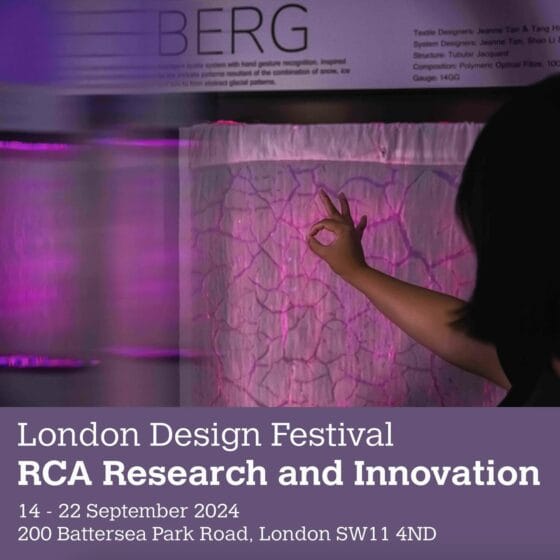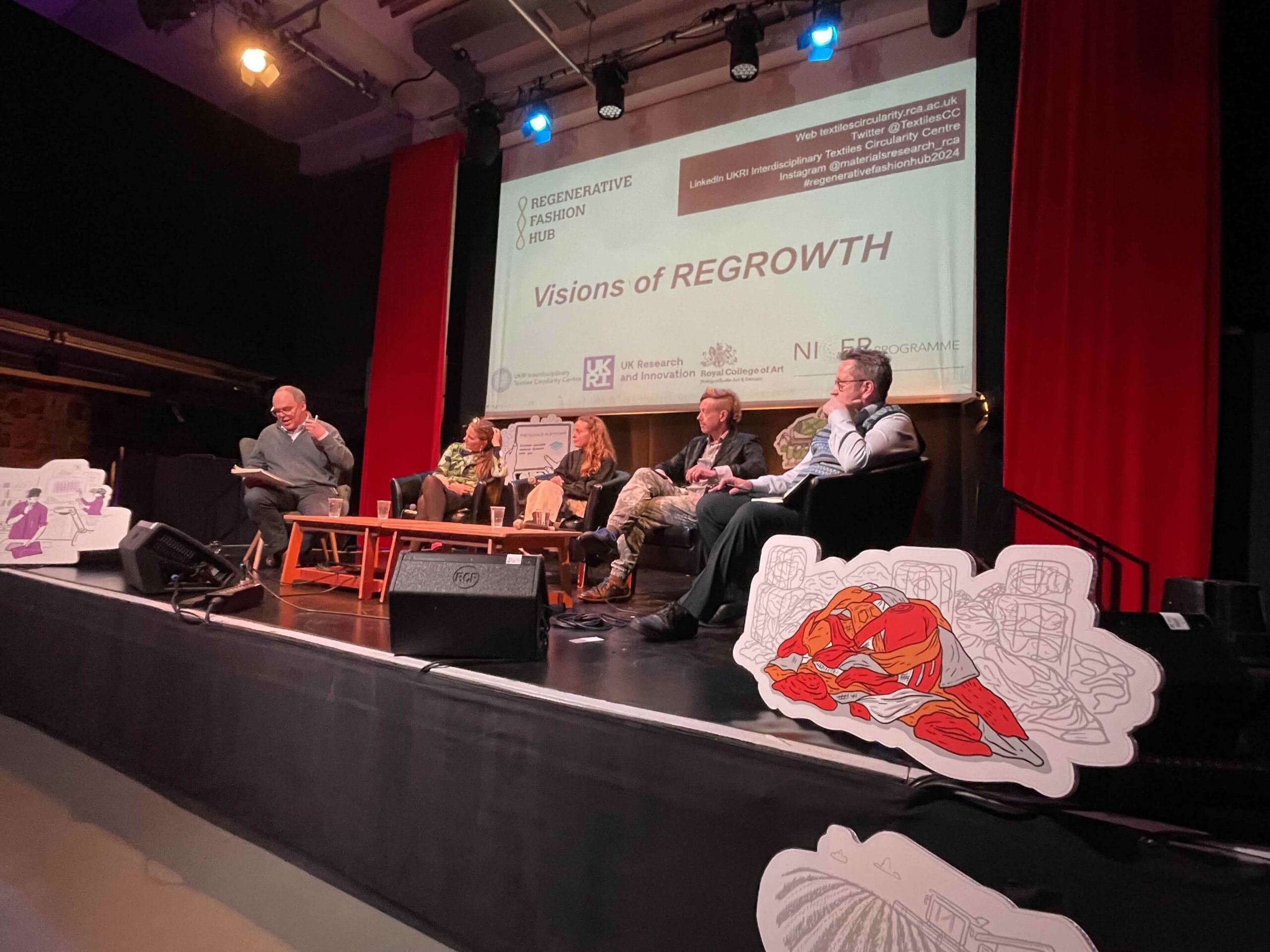
“The definition of prosperity has changed from a broad concept including health, community, and harmony, to a narrow concept focused on material wealth. While material standards have improved, measures of community, relationships, and environment show humanity worse off by traditional definitions of prosperity.” This shift in our values has led to the gradual but rapidly increasing destruction of our planet, and ever increasing social inequality. So what can we do to redress this?
It was this question that was posed to the speakers at our panel discussion, ‘Visions of Regrowth,’ which took place during the Regenerative Fashion Hub residency at Rich Mix in Spring 2024. The Regenerative Fashion Hub is the Textiles Circularity Centre’s stakeholder engagement platform, designed to engage the public by bringing the research to the highstreet. The research is visualised in an exhibition, and activated by a series of events and workshops that allow the visitors to really immerse themselves in the concepts.
The event brought together a group of speakers to explore the potential of new forms of abundance, social renewal and regrowth for a more sustainable future fashion economy that is regenerative by design.
Chaired by Chris Grantham, co-founder of Regenovate, the panel included Charles Armstrong, Founder & CEO of The Trampery, Sophie Thomas, Director of Circular Design at Useful Projects, Founding Director at Thomas.Matthews, and chair of the TCC Advisory Group, Brendan Conway, Associate Advisor at Community Led Housing London and Associate at Mobilise Public Ltd and Alessandra Tombazzi, Innovation & Change Designer at The Royal Society for Arts, Manufactures and Commerce.
Humanity’s extraction and consumption of materials is rapidly increasing and linked to narrow definitions of prosperity based on consumption. “We’ve turned into consumers,” Brendan Conway added. “We now need to try to decouple the idea of consuming from what it means to be a citizen.” For centuries, there has been a presumed link between prosperity and the use of natural resources. However, as Charles Armstrong explained, that has not always been the case. “It is very instructive to look at the history of the word ‘prosperity’ and how it’s been used at different times because it comes from the Latin Prosperitas, which just means doing well,” he said. “For most of the last 2,000 years, prosperitas and prosperity meant something quite broad and fuzzy that included being healthy, that included being enmeshed in your family and friends and community, which included being in a state of harmony with the world around you.” However, during the Industrial Revolution and throughout the 19th-century, the idea of prosperity came adrift from its morals, and the word has ended up with a meaning far more linked to material things.
“The UN estimates that 20% of the world’s population is in poverty,” Charles explained. “But for 80% of the population to not be in poverty in material terms is an incredible achievement, and we should not detract from that. But if we think back to the original meaning of prosperity, something has gone terribly wrong. The criteria of how we feel with our loved ones and our communities, our sense of harmony in the natural environment, the last century and a half has been a disaster.”
“The definition of prosperity has changed from a broad concept including health, community, and harmony, to a narrow concept focused on material wealth. While material standards have improved, measures of community, relationships, and environment show humanity worse off by traditional definitions of prosperity.” This shift in our values has led to the gradual but rapidly increasing destruction of our planet, and ever increasing social inequality. So what can we do to redress this?
It was this question that was posed to the speakers at our panel discussion, ‘Visions of Regrowth,’ which took place during the Regenerative Fashion Hub residency at Rich Mix in Spring 2024. The Regenerative Fashion Hub is the Textiles Circularity Centre’s stakeholder engagement platform, designed to engage the public by bringing the research to the highstreet. The research is visualised in an exhibition, and activated by a series of events and workshops that allow the visitors to really immerse themselves in the concepts.
The event brought together a group of speakers to explore the potential of new forms of abundance, social renewal and regrowth for a more sustainable future fashion economy that is regenerative by design.
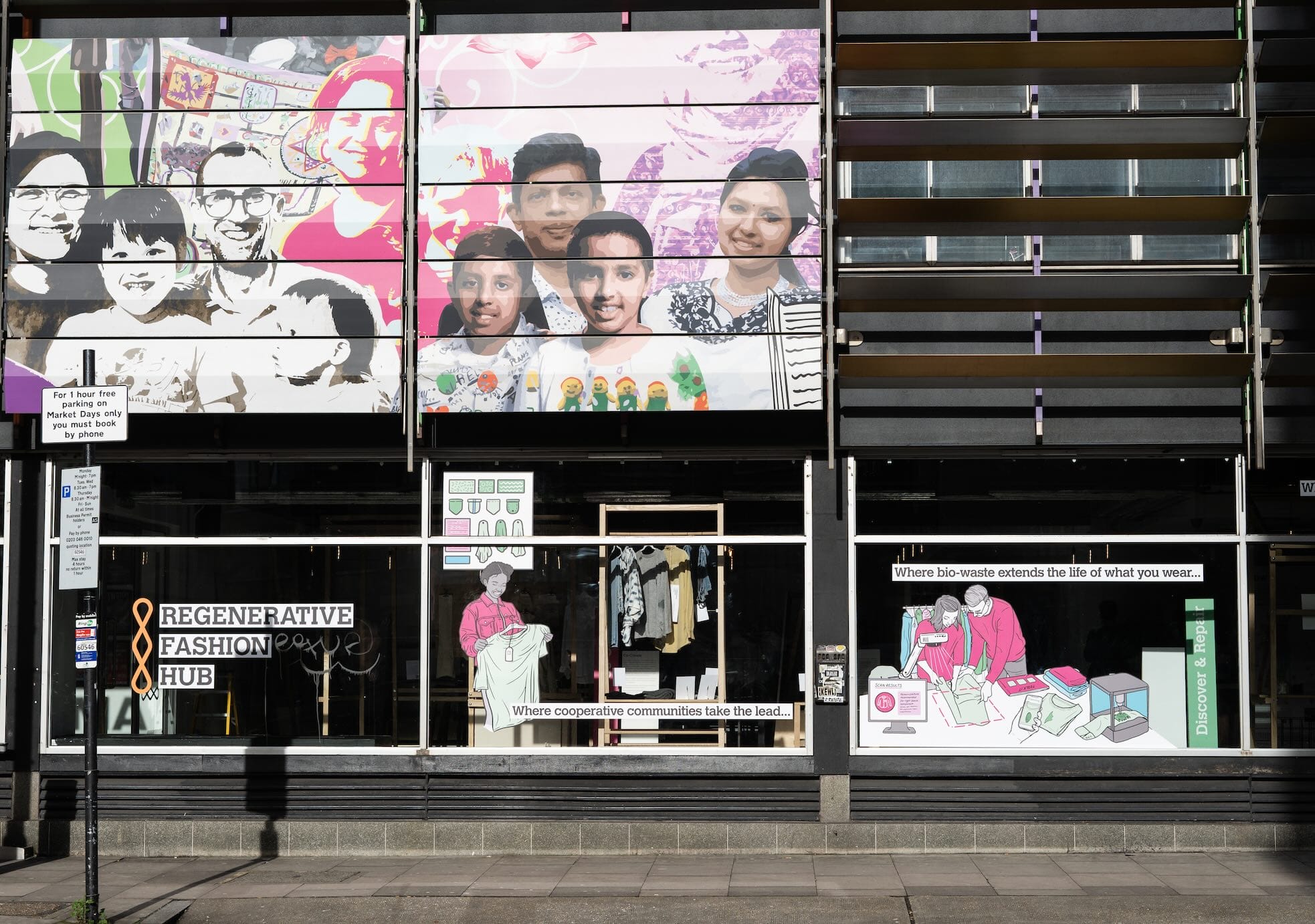
Environmental degradation has become an intrinsic part of the idea of prosperity that we currently have. It is impossible to continue increasing extraction at this pace, so we need to rethink prosperity and find ways to uncouple it from consumption. The panel urged the need to rethink scale and bring ideas of circularity and sustainability from the global, corporate level back to the local, community level. Rather than seeking more consumption, we should seek new forms of abundance in health, community, and environment. “That’s what’s so good about the Regenerative Fashion Hub,” Sophie Thomas said. “It brings together many different models of circularity, and shows have they can work together.”
One way to redress this, the panel argued, is for a return to local and community focused action, as outlined in the Textile Circularity Centre’s ‘Social Production Network’ model, which demonstrates how a circular economy can function on a local scale. “We’ve foolishly constructed this mega system of enormous scales,” Charles said. “However, the experiences that change people’s perspectives and habits tend to be extremely local and small-scale. There’s something, particularly about traditional forms of circularity, that are extremely local. For example, it would be your neighbours or someone in your village that you would turn to if you needed a service – such as repair – performed. Everything had the structure of a relationship, because you knew the people personally.”
“I have a mantra of dig where I live,” Brendan added. “I would only work now within my community. I’ve found that hyperlocal work is the only thing that actually works. Scale for me is about going deep rather than wide.”
“We do have to start thinking about much smaller levels of circularity, and nurturing on a local level,” Sophie Thomas said. “But ultimately, the problem still lies in this massive extraction, big-level supply network.” While local actions can absolutely help the transition to a more circular economy, we still need systems change on a global scale to truly solve the problem.
Sophie raised another question that is pertinent to designers. “We buy 22 billion pairs of shoes globally,” she said. “And we throw away 22 billion pairs of shoes. We have a 12 month supply of shoes, so then why are we making shoes out of materials that will last for 400 years? We could be making shoes out of materials that will degrade quickly in a way that is fortuitous for the environment.”
Ultimately, the panel all agreed on the hope and optimism that can be found on a local, community scale. “There are a lot of individuals who feel helpless, or like they can’t do anything,” Alessandra Tombazzi said. “Society has put us in a position where we feel like we don’t have the power to make change. But there is a very strong power in people coming together, even in grassroots movements. If we create the space and conditions to allow people to work together, that is when change can really start to happen.”
“I listen to my mother and the people in her community talk about prosperity,” Brendan said. “And it’s very inspiring to understand that indigenous idea of prosperity, which is simply having enough to eat and sharing with your community.”
“It’s about horizontal action,” Alessandra added. “It’s about starting small and watching the movement grow around you until it is really widespread.”
The Regenerative Fashion Hub is the on-the-high street exhibition of research conducted by the Textiles Circularity Centre on sustainable apparel-textiles. Designed to engage the public, industry, NGOs and government in discussion and knowledge-exchange, the Regenerative Fashion Hub hosts talks, open house sessions, policy workshops, and research activities.
Find out more about the Spring 2024 Regenerative Fashion Hub here.
Have you attended the Regenerative Fashion Hub? We are collecting data on how our research has impacted the people who visited our exhibitions or took part in our research studies.
If you would like to share your thoughts on the Regenerative Fashion Hub, please complete our impact tracking questionnaire.
Related News & Events
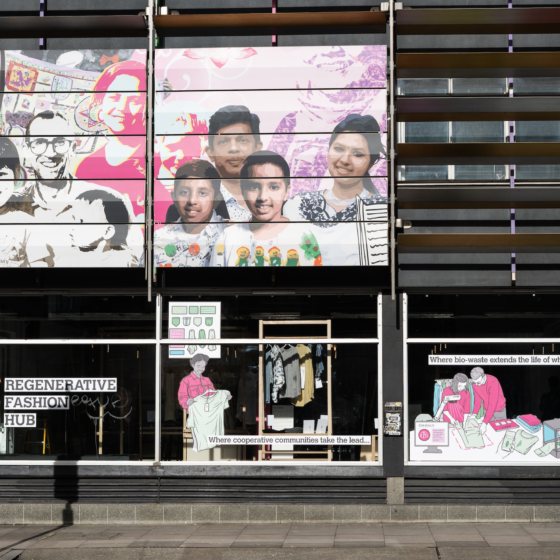
The Regenerative Fashion Hub opens at Rich Mix
Explore the future of sustainable fashion and textiles 23 February - 21 March 2024
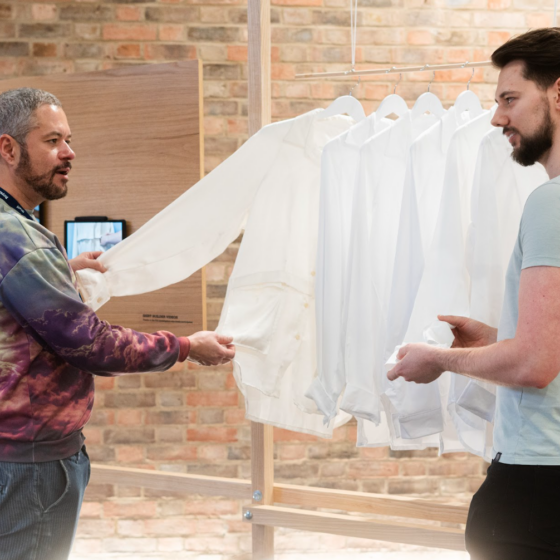
Additional dates announced for our open house and sign up to AR Biomaterials Sampler study 2024
We are pleased to announce additional dates for our open house sessions at the Royal College of Art this Saturday 3rd February and Thursday 8th February.
